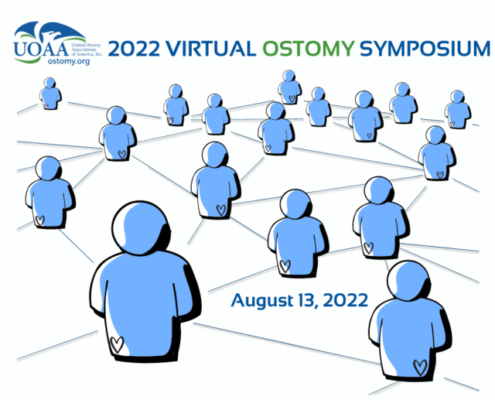 https://www.ostomy.org/wp-content/uploads/2022/08/RFR-5k-banner-all-locations.png
620
1600
Contributor
https://www.ostomy.org/wp-content/uploads/2025/01/20th-Logo-uoaa.png
Contributor2022-08-26 10:53:492022-08-28 22:57:36Celebrate and Support Ostomy Resilience
https://www.ostomy.org/wp-content/uploads/2022/08/RFR-5k-banner-all-locations.png
620
1600
Contributor
https://www.ostomy.org/wp-content/uploads/2025/01/20th-Logo-uoaa.png
Contributor2022-08-26 10:53:492022-08-28 22:57:36Celebrate and Support Ostomy ResilienceNot all ostomy types require a pouching system worn outside the body. These diversions utilize surgically created internal reservoirs but may come with some complications beyond conventional ostomy surgeries that you should discuss with your surgeon. Your disease and medical history will determine if you are a candidate for surgery.
Continent Bowel Diversions
Ileoanal Reservoir (J-Pouch) A procedure in which the colon and most of the rectum are surgically removed and an internal pouch is formed out of the terminal portion of the small intestine (ileum). An opening at the bottom of this pouch is attached to the anus in a way that the existing anal sphincter muscles can be used for continence. This procedure most often is performed on patients with ulcerative colitis or familial polyposis who have not previously lost their anal sphincters. In addition to the “J” pouch, there are “S” and “W” pouch geometric variants. It is also called ileoanal anastomosis, endorectal pull-through, pelvic pouch and, ileal pouch anal anastomosis (IPAA).
Continent Ileostomy (Kock Pouch) An ileostomy that drains into a surgically created pouch or reservoir located in the abdomen that is created from loops of the small intestine (ileum). Involuntary discharge of intestinal contents is prevented by a nipple valve created from the ileum. This method eliminates the need for the patient to wear an external pouch over the stoma. The stoma is catheterized throughout the day to empty the reservoir.
Barnett Continent Intestinal Reservoir (BCIR): A variant of the Kock Pouch developed during the 1970s and 80s by Dr. William O. Barnett and performed at a small number of hospitals. Proponents claim that it reduces the incidence of valve problems that occurred with the original Kock Pouch procedure.
Continent Urinary Diversions
Continent Urinary Diversion: Indiana Pouch The creation of an intestinal reservoir with a catheterizable channel that is brought from the reservoir to the skin with creation of a stoma. The channel can be catheterized several times a day to empty the reservoir. The Indiana pouch has become the predominant urinary diversion for patients who desire continence. The intestinal reservoir can be made from a variety of bowel segments.
Orthotopic Urinary Diversion (Neobladder) The creation of a reservoir (neo bladder) that is surgically anastomosed (connected) to the urethra. It is created for those who do not want a stoma and wish to void per the urethra. Reservoirs are typically created from 50-60 cm of the ileum. Learn more about who may be a candidate for this surgery and the advantages and disadvantages here.
These surgeries are performed most often as a life-saving treatment for bladder cancer. Read more about the Ins and Outs of Continent Diversions of the Bladder.
Other Types of Ostomy Surgery
These more rare types of diversions may be made for catheterization, feeding tubes or to divert fluids such as bile.
Nephrostomy: A surgical opening created between the kidney and the skin which allows for urine to drain through a tube (Nephrostomy tube) that has been inserted from the back, through the skin and then into the kidney. The tube is connected to a pouching system. It is usually indicated when there is a blockage impeding urine flow.
Cecostomy: A small opening created in the abdomen to the cecum (the beginning of the large intestine). It is created so that a tube (catheter) may be placed for irrigating the colon. It is used as an alternative to using an enema to empty the colon.
Gastrostomy: An opening created through the skin into the stomach. A tube may be placed for venting or drainage or for insertion of a feeding tube for nutritional support directly into the stomach.
Jejunostomy: An opening created through the skin into the jejunum (part of the small intestine) that can be used for a feeding tube or as a bypass during bowel resection.
Cholecystojejunostomy (Partial External Biliary Diversion): This surgery involves connecting a small piece of intestine between the gallbladder and the abdominal wall. A small hole is made in the gallbladder and one end of the intestine is attached to that opening. The other end of the intestine is attached to a hole in the abdominal wall to create a stoma. This is most often used for liver diseases and involves the draining of a portion of the bile into an external pouch.
Read Our Latest Posts About Continent Diversions
 https://www.ostomy.org/wp-content/uploads/2022/08/RFR-5k-banner-all-locations.png
620
1600
Contributor
https://www.ostomy.org/wp-content/uploads/2025/01/20th-Logo-uoaa.png
Contributor2022-08-26 10:53:492022-08-28 22:57:36Celebrate and Support Ostomy Resilience
https://www.ostomy.org/wp-content/uploads/2022/08/RFR-5k-banner-all-locations.png
620
1600
Contributor
https://www.ostomy.org/wp-content/uploads/2025/01/20th-Logo-uoaa.png
Contributor2022-08-26 10:53:492022-08-28 22:57:36Celebrate and Support Ostomy Resilience
Get Answers and Find Friends at the Virtual Ostomy Symposium
Colostomy, Continent Diversions, Events, Ileostomy, J-Pouch, Ostomy Basics, Ostomy News, Ostomy Tips, UOAA Conference, Urostomy https://www.ostomy.org/wp-content/uploads/2022/02/J-Pouch-Recovery-twists-and-turns.jpeg
924
1640
Contributor
https://www.ostomy.org/wp-content/uploads/2025/01/20th-Logo-uoaa.png
Contributor2022-02-28 12:36:302022-03-01 14:33:39Twists and Turns of J-Pouch Recovery
https://www.ostomy.org/wp-content/uploads/2022/02/J-Pouch-Recovery-twists-and-turns.jpeg
924
1640
Contributor
https://www.ostomy.org/wp-content/uploads/2025/01/20th-Logo-uoaa.png
Contributor2022-02-28 12:36:302022-03-01 14:33:39Twists and Turns of J-Pouch RecoveryContact Us

United Ostomy Associations of America
P.O. Box 2293
Biddeford, ME 04005-2293
Call us toll-free at: 1-800-826-0826.
Our Information Line hours are Monday-Friday, 9am to 3pm EST. If you have an emergency, please dial 911 or contact your local medical professional.
Please understand that UOAA is a private, nonprofit, advocacy and informational organization. We are not a medical facility and we do not have medical or legal professionals on staff. Therefore, UOAA does not provide Medical, Mental Health, Insurance or Legal Advice. Visit UOAA Virtual Ostomy Clinic provided by The Wound Company for non-emergency, virtual ostomy support.
Get Involved
UOAA is the leading organization proactively advocating on behalf of the ostomy community. Recognizing that we are always stronger together, we encourage everyone to get involved by joining our Advocacy Network. We’ve also created several Advocacy Tools and Resources to help you successfully advocate on behalf of the ostomy community to ensure every ostomate receives quality care.


